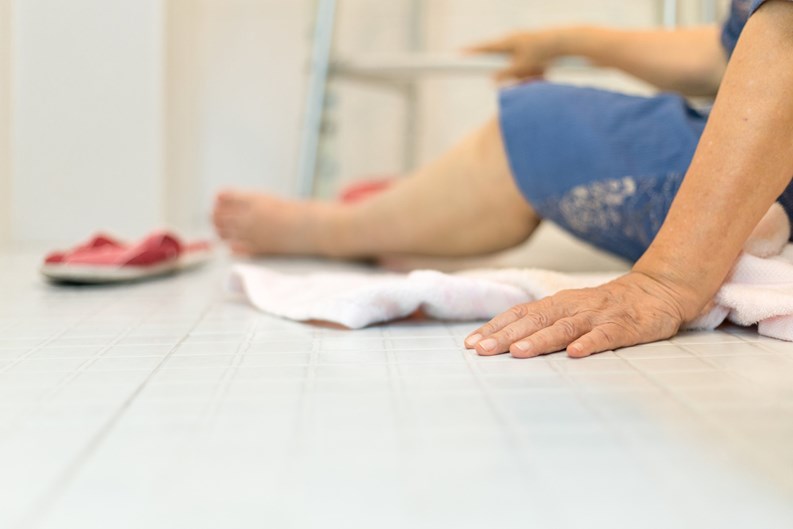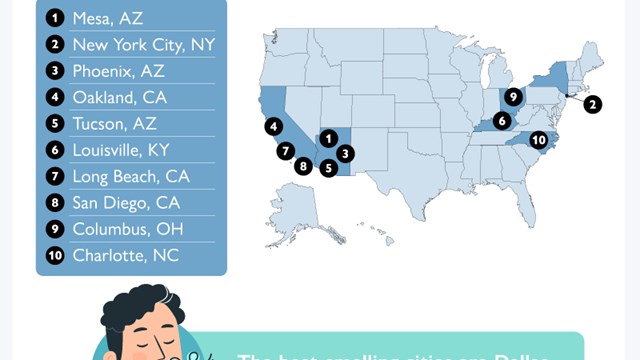Just like breathing and sleeping, slips and falls are a natural part of life—whether it's momentarily stumbling on a sidewalk or briefly losing your footing in the shower. Most of us would regard such incidents as one-offs. But judging by the number of annual visits to the emergency room and the huge monetary costs as a result, slips, trips, and falls (STFs) are a very serious matter. A newly-published book, Stop the Slip, by Thom Disch, offers some very enlightening and sobering facts about STFs that should make condos, co-ops, HOAs and property managers take note when it comes maintaining a safe environment at their buildings. Here are just a few random facts from the book:
There were 9 million emergency room visits, 1 million hospitalizations, and 30,000 deaths in 2014 attributed to falls.
Falls are responsible for a loss of over $150 billion annually in medical costs and lost wages in the U.S.
It’s just not an elderly problem--about 75 percent of fall injuries happened to people under the age of 68.
The leading cause of traumatic brain injury is due to falls.
Tubs and showers account for about 68 percent of bathroom injuries for people over the age of 14 in 2008..
Why Don’t We Take Falls Seriously
According to Disch--who is the owner and CEO of Handi-Ramp, a company that manufactures ramps for wheelchairs--there is a stigma associated with STFs. One of those factors is that we generally perceive falls as humorous from watching TV shows or movies. “Just go to Youtube,” he says. “You could see dozens of videos about how how people fall and people find it very funny that other people get injured. That's kind of the nature of slapstick comedy. We are kind of inoculated to the dangers of falls. Most of the time, we don't' see the consequences of those injuries later on.”
Another factor the author cites is the optimism bias component, which is the notion of “'That's not gonna happen to me.' You think it's the other guy that it's gonna happen to. So people don't see the potential for bad and they don't see the potential for slips and falls.”
Why STFs Should Matter to Community Associations and Property Managers
It's perhaps one thing to slip, trip or fall if you live in a single-family home. But there is a greater sense of responsibility when such incidents happen at a condo or co-op where you have a greater number of people living in the same building and sharing common areas--including hallways, stairs and steps, and sidewalks. Disch offers this piece of advice for associations and property managers: “Our first responsibility is to make sure the people that live with us our safe. And protecting them from these accidents that we know will happen is our responsibility as managers. That's the primary reason that we need to focus in on. It becomes our responsibility to cut it off before someone does get hurt.
One common area on the property that Disch cites as being the most dangerous are the stairs. From his experience, it was always the back stairs that got the least amount of attention. “Those were always the one that presented themselves as the most slip-and-fall risk,” he says. “I think a lot of building managers think, ‘Okay I will put down the one product everybody knows is the sandpaper tape.’ The problem with the sandpaper tape [is] if you put it outside, with the changes in weather, what happens is that the adhesive fails because it expands and contracts, and the tape itself becomes a hazard because it moves.”
The Bathroom as a Danger Area
Naturally one of the most accident-prone areas for STFs at a person's home or unit is the bathroom, especially the bathtub or shower. In his book, Disch writes that bathroom injuries account for more than 200,000 ER visits per year. He says a lot of that has to do with stepping over that rise whose height is about 18-24 inches.
“That automatically puts you in a situation where you are off balanced,” Disch explains. Instead of having two points of balance, or three points of balance, you now have one—just one foot as you're trying to step out. And you're already in an environment that's a little bit slippery. You should make sure that inside your tub you got some treatment on the tub so it's less likely when you have one foot in the tub to slip.
“The other thing that helps a lot is having a grab bar at the side of the tub” he continues, “because that grab bar gives you two points of stability. At least you're one foot [is] down and then you're grabbing onto a grab bar that is right there at the side of the tub. So if you're foot does slip, you still have something to hold on to secure you until you get that other foot back down.”
Legal Responsibilities and Insurance Issues
Type in the words 'falls,' 'trips,' 'injuries,' 'condos' into Google, and you'll come up with a number of results for law offices offering their services. It underscores the legal liability factor for the association and property manager if they don’t maintain the proper upkeep that could lead to someone slipping, tripping or falling. In 2015, the New Jersey Supreme Court decided that a homeowners’ association can be sued as a result of someone getting injured on a sidewalk that is owned by the community. That decision was based on a case involving a woman who slipped and fell on a icy sidewalk at an over-55 community in Plainsboro, New Jersey. A report by insurance company CNA Financial Corporation cites a study by the Institute of Real Estate Management (IREM) that said “57 percent of respondents ranked slips and falls as the single leading cause of current disputes.”
Disch addresses the subject of litigation in his book and offers a checklist provided by an attorney to see if someone involved in an STF accident has grounds for a claim. (i.e., “Did the property owner know or should he or she have known of both the condition and the risk?”; “Was the property owner negligent in one or more ways?”) “I'm not an attorney,” Disch says, “but most of those problems come about from negligence--not addressing issues that you know are there. You can't prevent all accidents. It's just the nature of life. But it's when you haven't dealt with an issue...that's when you have a problem.”
And according to CNA, the consequences of STF injuries could mean huge payouts to the injured and higher liability insurance premiums. “If you have a bad claim against you,” adds Disch, “your rates are going to go up. Managing that problem in advance will keep your own personal rates down because one of the criteria that every insurance company looks at, ‘Is this an organization or management company that had problem at the facility in the past?’ If they managed it well, you get better rates. If you have continuing problems, you'll have higher rates or sometimes they'll stop covering you and tell you to find another insurance company.”
What You Can Do
While the statistics regarding STFs may seem both surprising and overwhelming, Disch emphasizes that with the right amount of effort, vigilance and attention, falls can be preventable at a property.
“If you are making people aware,” he advises, “and giving them the opportunity to deal with this early before accidents happen, everybody's gonna be safer, everybody's gonna be happier. Once somebody tells you about a problem, investigate it. Don't say, ‘Well that was a one-time thing due to the snow.’ It might have been, but there might be more to it. ‘Is this gonna happen when it snows?’ ‘Is this gonna happen when it rains?’ All these types of things become topics that management companies should deal with. If I had to identify one thing that's key, it's communication.”
Aside from his own book, Disch recommends reaching out to your insurance company in matters involving STFs. “Insurance companies have a wealth of information,” he says, “and they have a vested interest in making sure that every building is safe. That is probably the resource that is at the fingertips of everyone of the management companies.”
'Stop the Slip' by Thom Disch is now available on Amazon,
David Chiu is an associate editor at The Cooperator







Leave a Comment